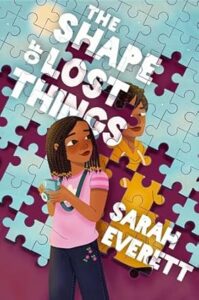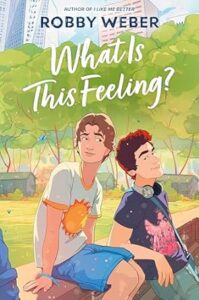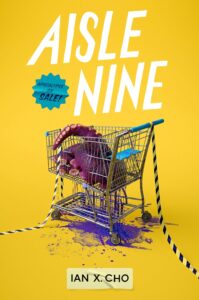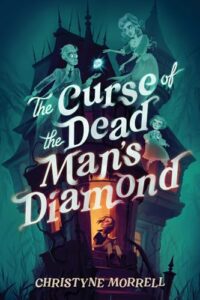“All in the Family”
A couple of books ago, I realized I was always writing about families. Several books into my career at that point, you’d think I’d have already figured this out, but it was news to me. There is that saying that writers are often the last to realize what their own books are about, so maybe that’s why it hadn’t occurred to me all this time. Either way, that’s my excuse, and I’m sticking to it.
I grew up in a fairly “straightforward” nuclear family. A first-generation Nigerian-Canadian family with two parents, a handful of siblings, and the most mischievous Golden Retriever you’d ever meet. I was an abnormally shy kid. Like, take-her-to-a-therapist shy, but no matter how much the adults around me tried to offer help, I didn’t feel safe enough or able to communicate what was happening in my world. Coming from a different culture, in a home that wasn’t always happy or healthy, there wasn’t a ton of media that explained me – to me or to other people. And make no mistake, for better or for worse, media does explain things. (Fun fact: As a kid, I [correctly] diagnosed myself with a fairly serious illness after I heard it described on TV.) In the same way I longed to see nerdy Black girls like me reflected in books, I longed to see my family reflected in books. But sadly it has taken well into my adulthood to find stories that resonate with me, stories that truly capture what it felt like to live in that structure, with those people, in these bones.
I think this is true for a lot of people, of all races, ages and genders.
When I think of family, I think of the skeletal system, the frame that the muscles and tendons and flesh hold on to and find their way around. But just like there are no two identical individuals, there are no two identical families. Families differ in structure, in relational dynamics, in history, in size, in genetics, in strengths and weaknesses and so much more. When we talk of diversity, we must also talk about the diversity of family. We don’t all grow up the same way or face the same set of challenges, and that matters. Some kids have two mothers, single fathers, blended families, multigenerational family living situations; some kids grow up in happy homes, abusive homes, neglectful homes, sad homes, and it is all worth writing and talking about.
In my book, The Shape of Lost Things, twelve-year-old Skye is dealing with an abrupt change in her family – her older brother who has been missing for four years has returned home. It’s good news. Great news. Until she starts to suspect that the boy who came home isn’t her brother after all, but an imposter.
It is unlikely that many kid readers of Shape will relate to the main plot, but my hope is that they might relate to the uncertainty that comes with parental divorce, to the difficulty of growing up with a mentally ill parent, to the pain and mental dissonance that comes with loving someone while possibly fearing them. Then, there are other things. Like first crushes, friendship breakups, scientific facts supplied daily.
It is true, of course, that family is more than just your family of origin; it is also pets, partners, friends, extended family, people who come to matter to you over time. As a writer, I consider it part of my job to keep writing about families. Different kinds of families, different configurations of families. My hope is that, someday, even one reader might find the vocabulary to describe their home life because of my work or somebody else’s. As writers, we are never going to represent every type of family that exists; it’s physically impossible. But in your role as an educator, please never doubt the power of asking kids where they come from and what their family looks like. ‘Draw [Or Write About] Your Family’ prompts can be an opener for vital discussions about families, the safety of people’s homes, the concerns that might be making learning difficult.
Family is a beautiful, complicated thing, and like the skeletal system, it can hold you upright and make you who you are. It can also suffer from breaks and frailty and a hundred different ailments. While, ultimately, you are not your family, speaking about yours and asking about someone else’s could be life-saving.
Published October 22nd, 2024 by HarperCollins
About the Book: From the award-winning author of The Probability of Everything, which has been called “one of the best books I have read this year (maybe ever)” (Colby Sharp, Nerdy Book Club) and “Powerful” (Kirkus Reviews, starred review), comes a heartfelt exploration of family and change as twelve-year-old Skye reunites with her older brother, Finn, after he spent four years on the run with their father.
Skye Nickson’s world changed forever when her dad went on the run with her brother, Finn. It’s been four years without Finn’s jokes, four years without her father’s old soul music, and four years of Skye filling in as Rent-a-Finn on his MIA birthdays for their mom. Finn’s birthday is always difficult, but at least Skye has her best friends, Reece and Jax, to lean on, even if Reece has started acting too cool for them.
But this year is different because after Finn’s birthday, they get a call that he’s finally been found. Tall, quiet, and secretive, this Finn is nothing like the brother she grew up with. He keeps taking late-night phone calls and losing his new expensive gifts, and he doesn’t seem to remember any of their inside jokes or secrets.
As Skye tries to make sense of it all through the lens of her old Polaroid camera, she starts to wonder: Could this Finn be someone else entirely? And if everyone else has changed, does it mean that Skye has to change too?
About the Author: Sarah Everett is the author of The Probability of Everything as well as several books for teens. Charlotte’s Web was the first book that ever made her cry, and while she despises spiders, she still has an abiding love of stories that move her. When she is not reading or writing, she is dreaming about summer, gearing up for her next travel adventure, perfecting her tree pose, or yodeling with her dog. She lives in western Canada.
Thank you, Sarah, for this love letter to families!











